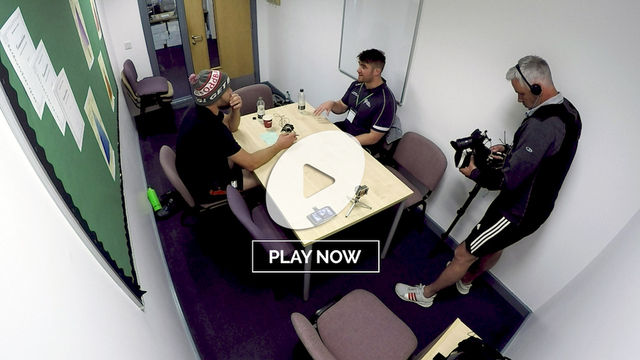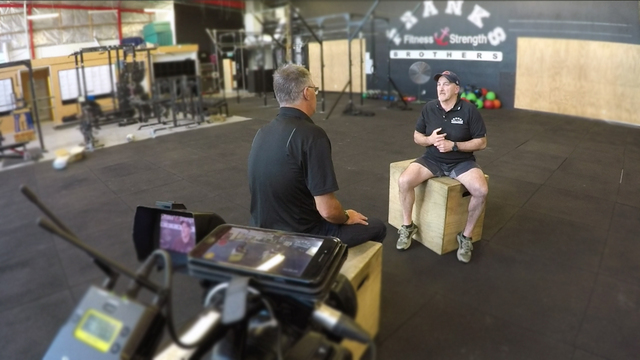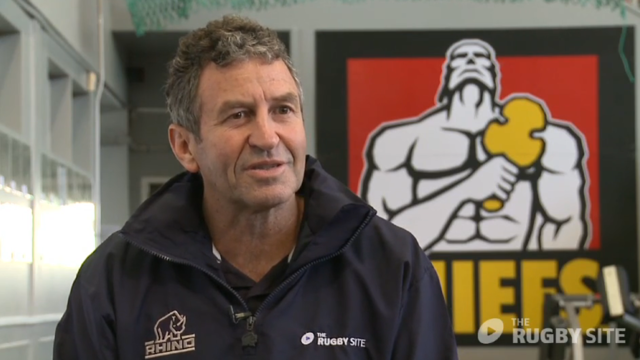Psychology and the small moments of performance
Most successful rugby teams at professional level are those who emphasize ‘doing the next job’ and passing beyond failures, small or large, as quickly as possible. Players who cannot move swiftly beyond their mistakes are invariably found out at the elite level of any sport and tend to be targeted by the opposition.
The New Zealand All Blacks have had Gilbert Enoka doing their psychological work for them throughout their long period of recent success. Wayne Smith was one of the first to benefit from Enoka’s guidance as a player, and it was the beginning of a long association between the two men:
“I got into a routine that involved some visualisation… Everyone daydreams – but this is more a structured way of seeing yourself perform and making the right decisions while you’re sitting in your chair. It complements a lot of the physical stuff you do.”
After the 2007 disaster in a quarter-final against France, Enoka initiated a way of thinking which could minimize the tendency to hit the panic-button (what Enoka now calls ‘red head’ reactiveness) and instil clarity of thought under pressure (‘blue head’).
Brad Thorn would throw water over his face, and Richie McCaw would stamp his feet into the turf in a literal and metaphorical ‘grounding’ back in the moment that was actually happening, rather than those which had already passed, or those they imagined happening some time in the game’s future.
The need for external motivation was still seen as a weakness in the macho ethos of amateur rugby, so it took a long time for Enoka to be accepted as a ‘mental skills’ coach and his work to be properly valued. Now his longevity has outdistanced every All Black coach and player – he has been involved for 14 years and 167 Test matches.
More mature professional sports than rugby have much more of a background in integrating mental skills training. The celebrated American Basketball coach Phil Jackson, who has won eleven NBA championships with the LA Lakers and Chicago Bulls, relies on George Mumford as his ‘mindfulness expert’.
Mumford was the first to introduce meditation practices into real training time for the Lakers. As Jackson says,
“George is there to build the muscle of the mind…He tries to get your basketball life, your whole life, in a peaceful, relaxed state so that you can compete… He tries to teach the players a way to relax and regain focus within a couple of breaths.”
Mumford’s task with the Bulls was to upgrade the concentration of the other players around Michael Jordan, a player who accessed “the zone” – that sporting sacred ground where everything is fully in focus and unfolding in the moment in rhythm with the player’s mind and body – on a regular basis. He succeeded.
As one of Jordan’s team-mates, Bill Wennington put it,
“[Playing] with Michael, you have to be in the moment. You can’t worry about what just happened, the basket you missed, the foul you made two minutes ago, because it’s over. You can’t worry about what’s gonna happen the next time down the floor.”
Likewise, Mumford introduced specific mental training techniques to the Lakers’ preparation which helped them rehearse pressure situations before they ever happened. As all-time Laker great Kobe Bryant recalls,
“It increased our performance a lot… I’m surprised other teams don’t do that kind of stuff. Working with George helped us to get issues out of the way before they even started.”
The work of specialists like Enoka and Mumford will always be been pilloried by those who do not understand the small margins involved in elite sport – and there will be a natural resistance within the establishment to information from ‘outside the box’. Nonetheless, that information is rapidly becoming the most precious commodity available.
The experience of small margins became a very concrete reality for me while watching the Clermont-Leinster European Champions Cup semi-final play out in Lyon last weekend.
During our (Leinster’s) preparation for the match, we had proposed the use of an attacking move with which Joe Schmidt had enjoyed success as coach of Leinster a few years ago, and against the same opponents.
Cometh the day, and a moment in the game occurred where all the planning could be brought to bear in a moment on the field. The move involves the half-back running away from the base of the breakdown and then wrapping around a forward first receiver. If the defence is successfully drawn out of the guard position, there will be space for a runner hidden behind the ruck to run into.
One of the crucial elements in the success of the play is the ability of the attacking cleanout players to prevent defenders in or around the ruck from filling the potential running lane.
In this instance, the Leinster #7 Dan Leavy hangs on to the ankle of Aurelien Rougerie at the back of the ruck – an action that occurs at almost every breakdown in the modern game. Leavy’s action is clearer from the camera angle from behind the posts:
Rightly or wrongly, the try was disallowed, and the entire complexion of the game changed as a result. If the try had stood, Leinster would have won the game.
The small margins in this example also have an historical background. When I was working with Stuart Lancaster in the England coaching group, we encountered exactly the same attacking set-up in our 2014 Six Nations game against Ireland:
It is the same move, with the Irish #9 Conor Murray dragging the defence away from guard and full-back Rob Kearney appearing from a hidden position behind the ruck. The difference is that in this instance, the block by Paul O’Connell on Joe Launchbury as he moves across the face of the ruck to make the tackle, goes unpunished:
Is Leavy’s hold on Rougerie more significant than O’Connell’s block on Launchbury? It is a very finely-balanced question – and one that illustrates the minute detail, and judgment of that detail upon which the fate of elite professional rugby matches can now depend.
An important part of that detail is the psychological preparation for all the potential situations that are likely to arise during games. Remember the story of Gilbert Enoka, who steadily became one of the most influential figures in All Black success over the last decade – he was first listed as a ‘masseur’ because of the innate resistance within the establishment to his real role in the coaching group. It is a salutary thought.





